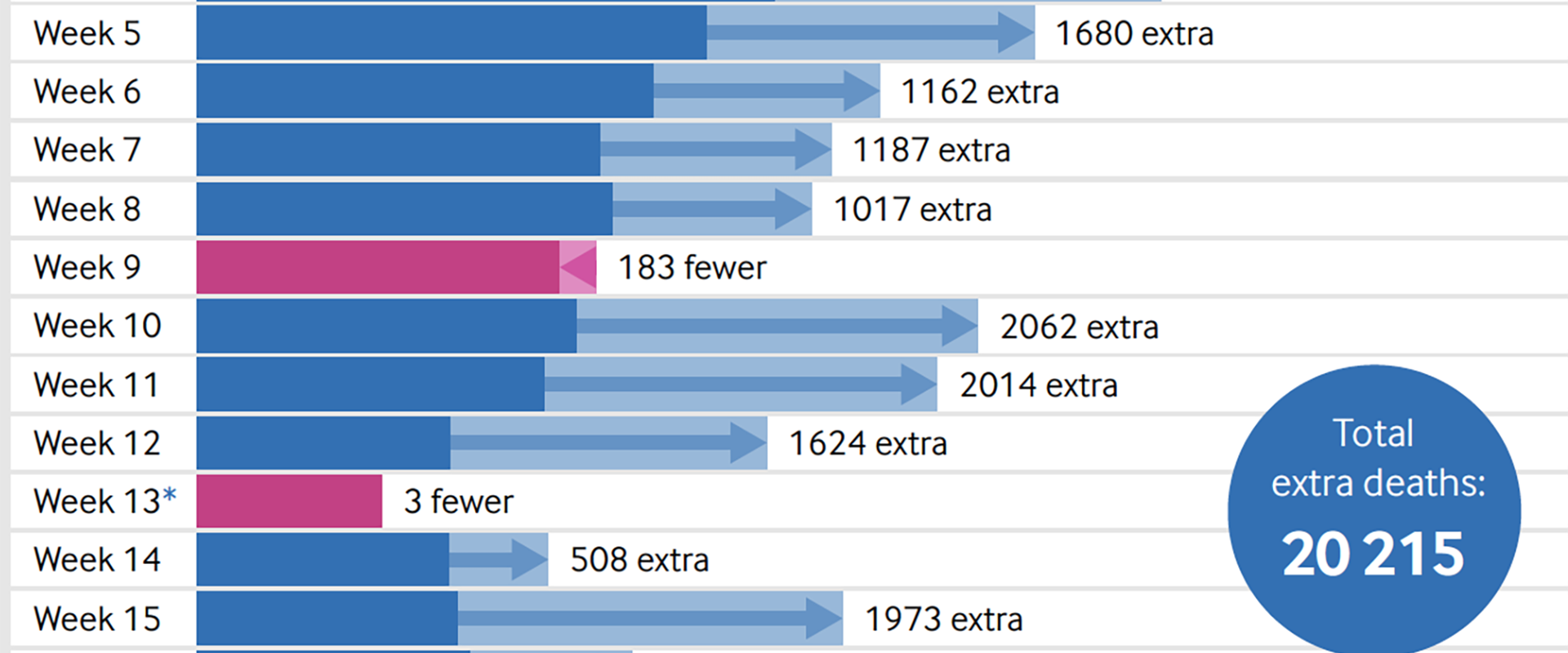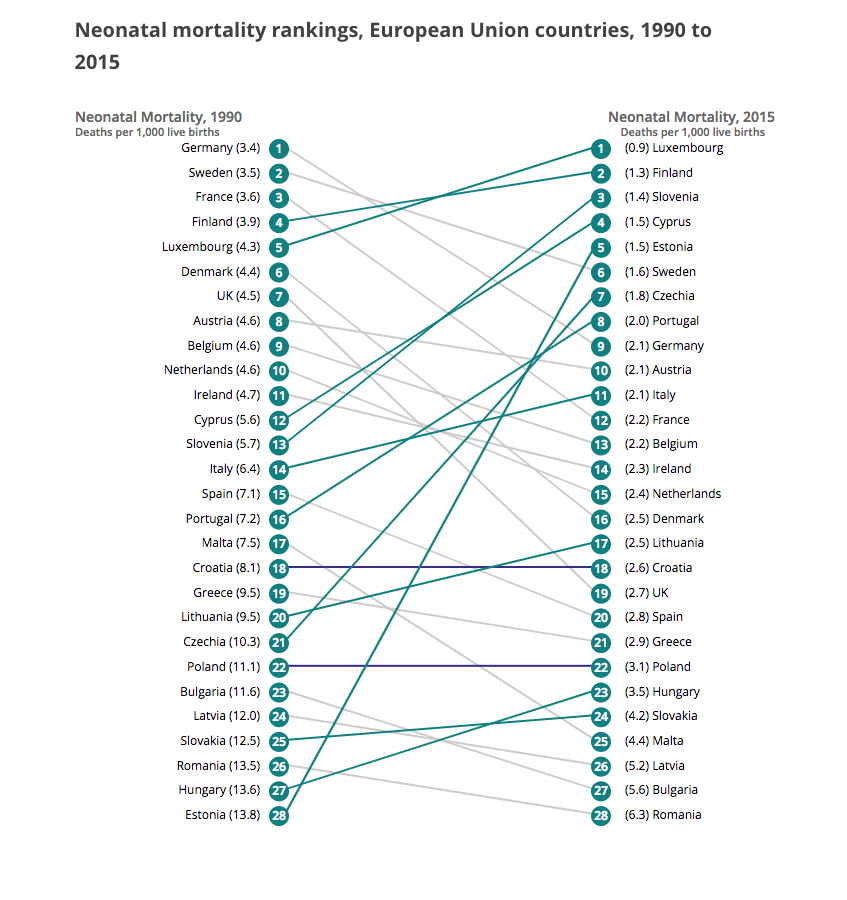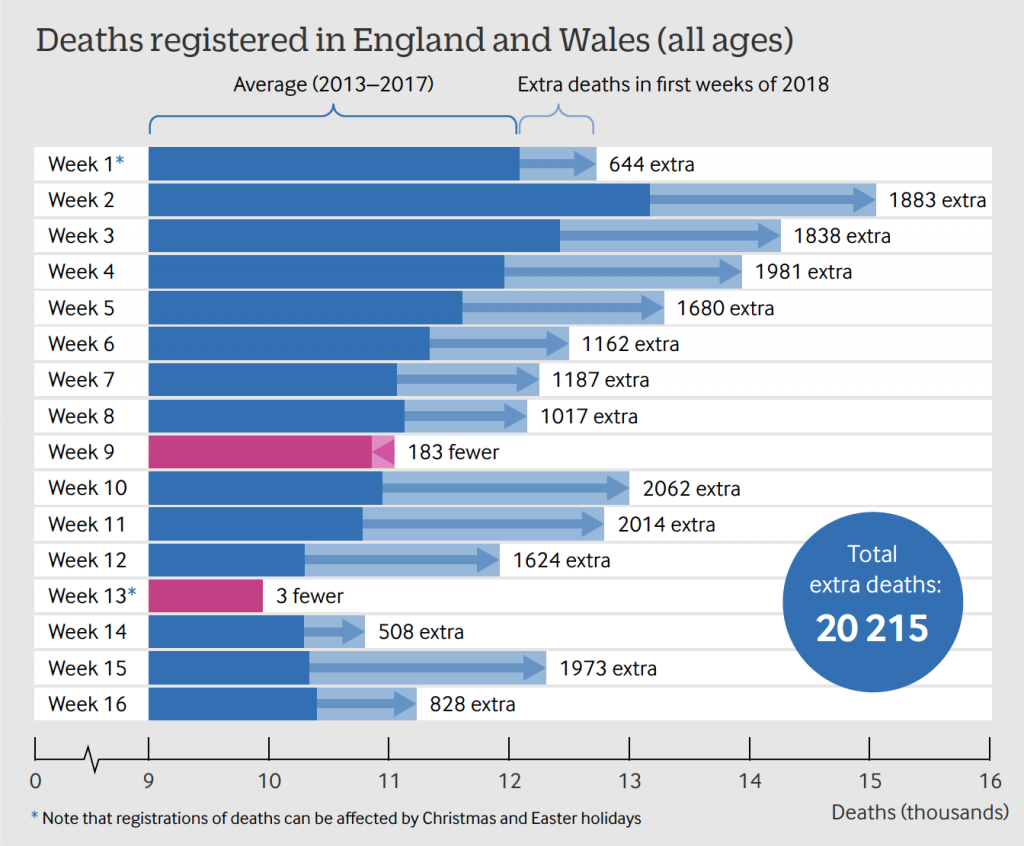Government must investigate rising excess deaths in England and Wales

Health researchers have urged the government and MPs to investigate rising numbers of deaths in England and Wales, after new figures showed over 20,000 “excess deaths” so far in 2018.
Gareth Iacobucci writing in the British Medical Journal on May 11th 2018 continued:
Earlier this year an analysis of the Office for National Statistics’ data on weekly provisional deaths in England and Wales, published in The BMJ, found that by week seven of 2018 (ending 16 February) 10 000 more people had died than the average from the past five years.
Lucinda Hiam, honorary research fellow at the London School of Hygiene and Tropical Medicine, and Danny Dorling, professor of geography at the University of Oxford, who carried out the study, said that neither flu nor winter weather seemed to be the main cause of the increase.
A subsequent analysis from the same authors, posted on 8 May as a rapid response to the original article, shows that by the end of week 16 (ending 20 April) 20,215 more people have died than the average for the past five years.
The authors found it unlikely that this trend was a “blip” and urged the government and the House of Commons Health Select Committee to investigate the issue.
They wrote, “The latest Office for National Statistics data on weekly provisional deaths in England and Wales sadly provide little reassurance of this being a ‘blip’ as some have suggested. Yet, still, no action taken or even mention of a possible investigation has been heard from the Department of Health and Social Care. How many deaths will it take for the government to take note?”
Last year an analysis by Michael Marmot, a leading public expert, found that the rate of increase in life expectancy in England had almost halved since 2010 and was close to stalling.
In response to Hiam and Dorling’s analysis, a spokesman for the Department of Health and Social Care said, “We keep all research in this area under review, but the ‘age standardised mortality rate’—which has been broadly stable in recent years—is considered a much more reliable measure, as this type of research doesn’t take into account fluctuations in population numbers and the ageing population.”
But Dorling and Hiam strongly criticised the department’s response, saying, “The age standardised rates should not be ‘broadly stable’—they should be getting better as they have for almost all years since 1945, and are doing in all other European countries in recent years (2011 to 2015). “There is no other country in western Europe that has experienced a stalling in mortality improvement across the board as poor as that in the UK in recent years.”
They said that the Health Select Committee should carry out an investigation and “call ministers from the Department of Health and officials from Public Health England to answer their very specific questions without evasion.”
. . .
The British Medical Journal included a graph in their news report illustrating the continued elevated levels of overall (all age) mortality:
read the full rapid response here with all the graphs shown in this post embedded in a single PDF file, fully referenced.
Another rapid response to the original March 14th 2018 BMJ article was posted by David Robinson and his colleagues on 18 March 2018:
In this they revealed that “Death rate continues to rise for poorest infants in England and Wales” explaining that:
” Last year we raised concern about the rise in infant mortality in England and Wales in a letter to the BMJ.(1) The latest data released by the ONS this week shows that infant mortality has risen for the second year running. In 2016 there were 2651 infant deaths, compared to 2578 and 2517 in the preceding two years. The statistically significant increase in infant mortality rate from 3.6 to 3.8 deaths per thousand live births over these two years (p-value = 0.037) is explained by the 5.3% increase in infant deaths, rather than by any change in the denominator which showed only negligible change. …”
A few month earlier, on October 13th 2017, the Office for National Statistics published the following graphic under the title: “Neonatal mortality rankings, European Union countries, 1990 to 2015”
In late 2017 ONS reported that “The UK has dropped several ranks in the European Union rankings of child mortality since 1990, recent analysis of WHO and ONS data has found”. They explained that “The neonatal mortality rate indicates the probability of dying in the first 28 days of life. In 1990, the UK was seventh in the European Union with a neonatal mortality rate of 4.5 deaths per 1,000 live births. Germany, Sweden, France, Finland, Luxembourg and Denmark were ahead of the UK with lower neonatal mortality rates. The worst performing countries were Romania, Hungary and Estonia, which had neonatal mortality rates of 13.5, 13.6 and 13.8 respectively. Yet by 2015, Estonia had managed to overtake the UK, coming in at fifth place with a rate of 1.5, while the UK was pushed back to 19th with a slightly higher rate of 2.7. Other countries with a similar neonatal mortality rate to the UK include Croatia (2.6) , Lithuania and Denmark (both at 2.5), and Spain (2.8).”

Neonatal mortality rankings, European Union countries, 1990 to 2015
And then the UK neonatal mortality rate rose during 2015 and 2016.The overall infant mortality rate rose as well. This accelerated the rate of fall of the UK in the league table above.
An interactive version of the ONS graphic can be found here. Readers should note that the reality today is even worse than that shown above. Already, by 2015, the UK had experienced the sharpest and fastest relative fall in its ranking in the EU, worse than any other EU country, as measured by neonatal mortality. Then, after 2015, the rates rose and the relative decline shown in the graph above accelerated. To date (Sunday May 12th 2018) the Department of Health has declined to comment on the rising numbers of dead babies in recent years, either just within England, or those across Great Britain and Northern Ireland as a whole.
